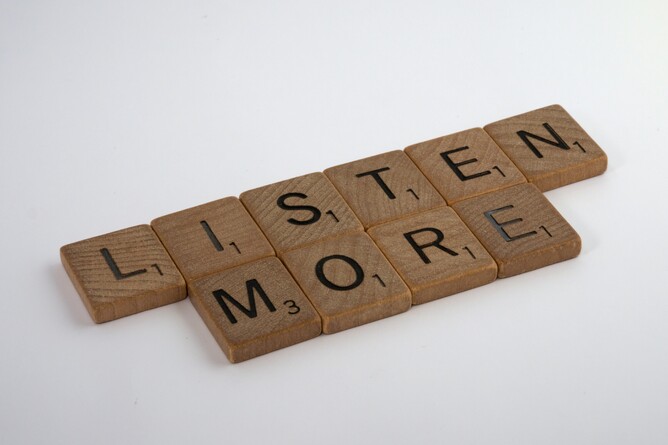Listening. One of the most important skills we have. But are we taught how to listen? Not just told to do it, but trained in the art?
Do you consider yourself to be a good listener?
Not too long ago I would have answered this question with a confident yes, of course. Listening is a pre-requisite for supporting people experiencing complex challenges and disadvantage. Then around 6 years ago that certainty was brought into doubt. I’d already recognised that I was a ‘fixer’ and was in the process of taming my ‘advice monster,’ [1] Could it also be that I needed to up my game around listening skills as well?
I was recharging my batteries on a mindfulness retreat, ‘Finding Stillness in Daily Life’ [2] and taking part in a self-reflective exercise. I had to sit in complete silence whilst my partner shared a current concern they wanted to resolve. I fought the desire to interrupt, give advice and comfort. To empathise by sharing similar experiences. I simply listened. I wrestled with my internal voices and was silent.
Something wonderful happened. My partner not only described what was bothering her but was able to identify and articulate the solution, listing the actions she needed to take. All in the space of around 3 minutes. When my turn came, the same thing happened. I found the answer inside myself.
Listening, truly listening, is one of the conditions we can create in our professional roles to support people identify their strengths and use these to find solutions themselves to some of the challenges they face.
Some tools to help you reflect on your own listening skills include a short video by Simon Sinek ‘The Art of Listening’ https://www.youtube.com/watch?v=qpnNsSyDw-g and some learning I took from the Gallup at Work summit[3], a framework for understanding and developing listening skills. If you want to tame your own ‘advice monster’ listen to Michael Bungay Stanier in his amusing TedTalk https://www.youtube.com/watch?v=Kl0rmx7aa0w. Mine is still around, but improving.
Three levels of listening – a framework
Level 1. Listening to respond. This tends to be our default position. Waiting for our turn to talk, give advice, empathy.
Level 2. Listening to understand. Exploring more deeply, helping someone to ‘empty their bucket’[4]
Level 3. Listening for specifics These could be strengths, emotions, values, beliefs, and mindset. To do this it helps to set an intention. ‘What am I listening for in this conversation?’ To hear what is behind, between and in front of the words you hear. ‘Tell me more’, ‘What else?’
Once you recognise which level you are engaged in, and perhaps more importantly, which one you should be using, it can be a game changer.
[1] Michael Bungay Stanier TEDTalk
[2] West Lexham Norfolk westlexham.org
[3] https://www.gallupatwork.com/2022
[4] S Sinek ‘The Art of Listening’


